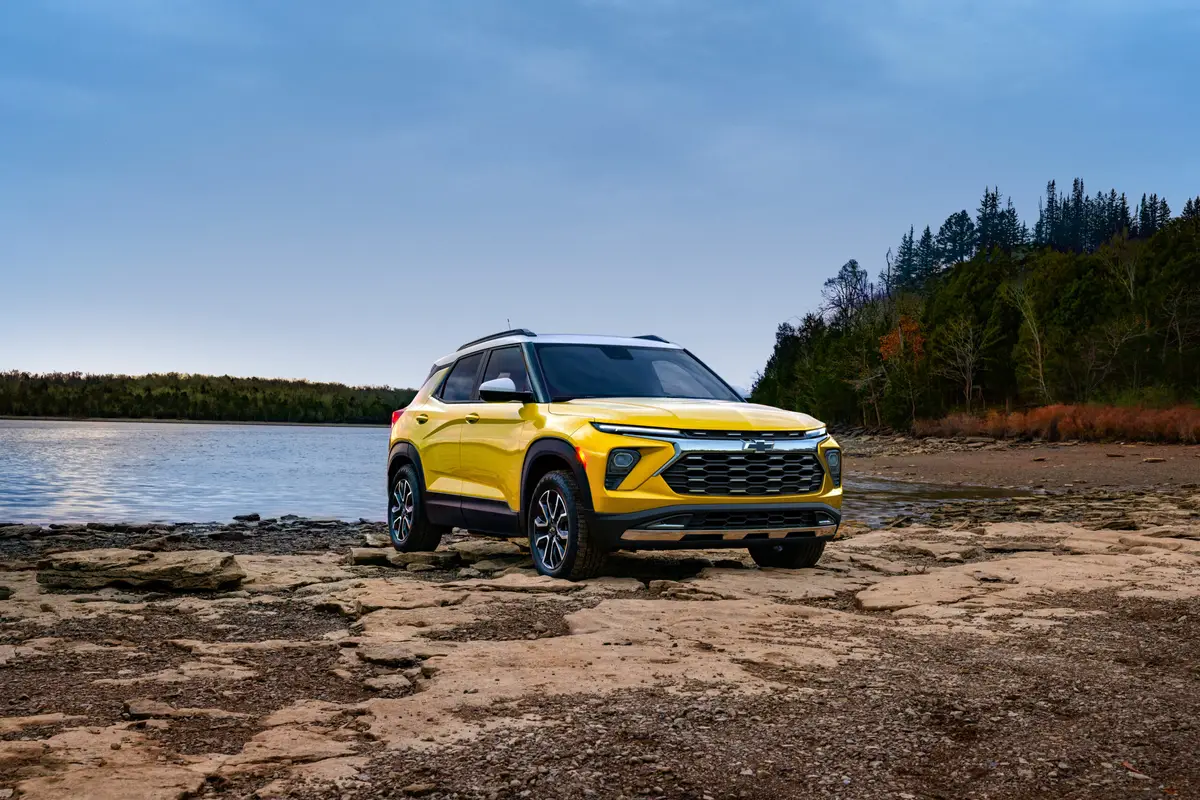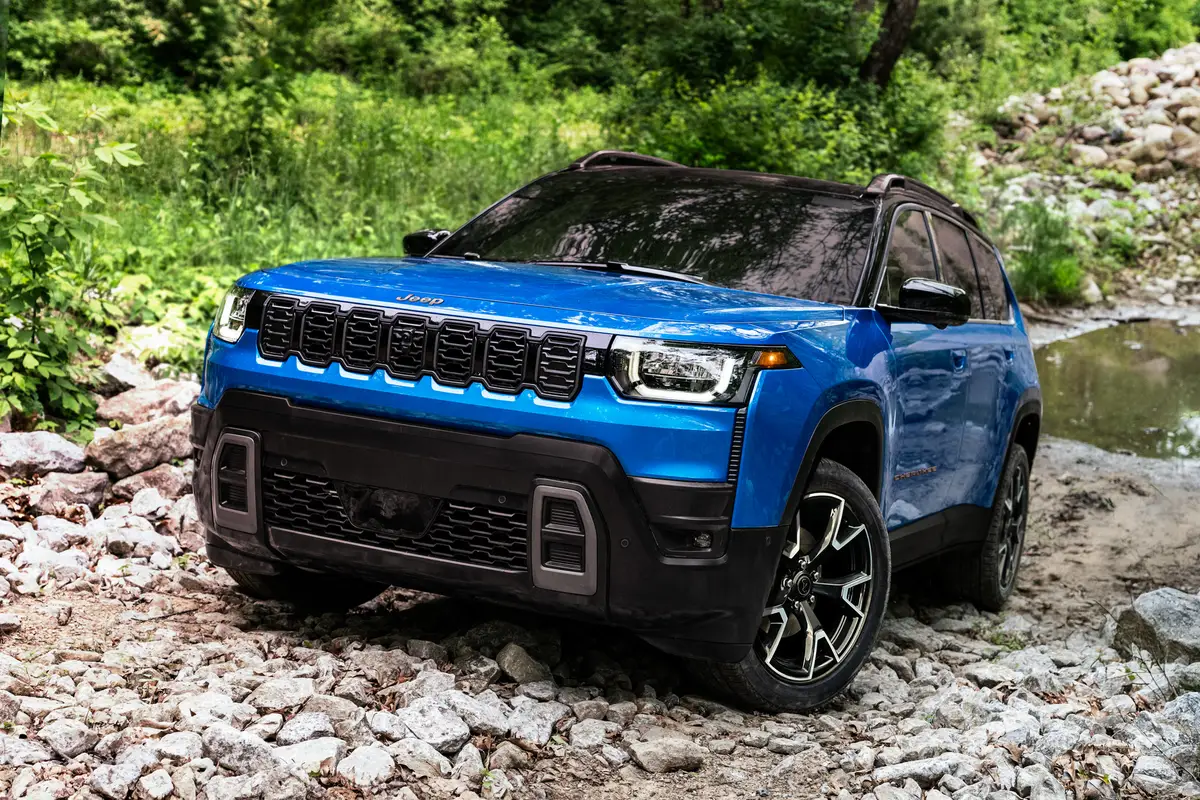chicagotribune.com's view
While Toyota is considered a benchmark for knowing what to do and when to do it, history shows it has stumbled on occasion.
Consider its attempt to take on the full-size Ford and Chevrolet trucks with its T-100, a vastly undersized and underpowered midsize pickup.
And then it chose to take on the Chrysler minivans with Previa, a rear-wheel-drive hunk of ugly minus a power sliding door and that needed supercharging to eke power out of its 4-cylinder engine.
But Toyota tried again. Sienna replaced Previa for the 1998 model year and Tundra replaced the T-100 for 2000, though Tundra needed yet another try and this fall adds a larger DoubleCab to match the size of the Ford and Chevy rivals.
And that leads us back to the 2004 update of the Sienna, which epitomizes Toyota’s try-again philosophy. Toyota made a list of Sienna shortcomings and acted to eliminate them one by one.
Sienna is offered in CE, LE, XLE and XLE Limited versions. We tested the ’04 LE, which like all Siennas is built on a 5-inch longer wheelbase and is 6 inches longer, 4 inches wider and 2 inches taller than its predecessor. Those dimensions mean vastly improved ride and handling plus more cabin room for passengers and cargo.
While 2 inches taller, you don’t feel top-heavy or wobbly in corners because those extra 4 inches of width give you a more sure-footed stance on the road. You don’t sit as high as in a sport-utility vehicle, but the windshield is so huge, you still see far down the road, as you do in one of those tall SUVs.
Along with smoother ride and more stable handling comes more power. A 3.3-liter, 230-horsepower V-6 that delivers 242 foot-pounds of torque for more muscle at launch replaces the 3-liter, 210-h.p. V-6 that developed 220 foot-pounds of torque.
Pedal response is quick and quiet. No hesitation from the light, and no need to get a running start with a full load to get up the incline.
Yet, thanks in part to a 5-speed automatic replacing the 4-speed, mileage is 19 m.p.g. city/27 m.p.g. highway, a 3 m.p.g. increase on the highway. The 3.3 will replace the 3-liter in all vehicles with it, including Camry this spring.
Another change finds the front-wheel-drive Sienna offering optional all-wheel-drive for the first time, a feature the Honda Odyssey won’t have until the ’05 arrives in ’04. AWD runs $3,615 in the LE, $3,205 in the XLE and $2,450 in the top-of-the-line XLE Limited.
While 16-inch all-season radial tires are standard in Sienna (15-inch for ’03), with AWD you move up to 17-inch all-season run-flat tires because the AWD hardware eliminates the space for a mini-spare under the van.
With AWD you also get Vehicle Stability Control (VSC) with traction control for the first time along with rear disc brakes, windshield wiper de-icers and daytime running lights.
Traction control helps get you moving from the light on slipp ery surfaces; VSC helps keep you moving in the direction the wheel is pointed by applying the standard four-wheel anti-lock brakes when slippage is detected. VSC is standard on the XLE Limited, a $650 option on the XLE. It’s $650 well spent.
Also new is an optional ($2,080) navigation system teamed with a rearview camera (similar to that on the Acura MDX sport-ute (Transportation, Jan. 19). A dash-mounted screen lets you see what’s behind when backing up.
Yet another new item, Sienna comes with a standard 60/40 split third-row seat. Odyssey has a one-piece third-row bench that folds flat into the floor. Sienna’s split third seat allows you to fold either or both sides flat into the floor. The cargo hold is a deep well that hides the seat when folded flat. Why not a power folding seat like on the Lincoln Navigator SUV? Cost and weight, Toyota says, but stay tuned.
Second-row seats fold and flip forward to create wide aisles to the third row or, if you’d rather not flip and fold, you can move the passenger side seat against the driver’s side seat to create an aisle on the passenger’s side to the third row. Or, you can opt for three second-row seats (CE and LE), in which the middle unit holds a child safety seat and slides forward so Mom or Dad can tend to the child if needed.
Other nice touches: A fold-down overhead mirror so driver/passenger can check on the kids; the front passenger seat back folds flat so you can haul a ladder inside; and a center tray table holds four cups and sandwiches or five cups, two juice boxes and a sandwich.
Also, there are plastic grocery bag holders in the front dash and along the backs of the third-row seat; a cupholder with built-in coin holder that pulls from the dash; bottle holders built into each side door; and stowage holders inside the front-door armrests.
The test vehicle came with an optional (part of the $2,645 LE package) passenger-side power sliding door with pinch protection (manual driver’s side slider standard), meaning the door stops and retracts if someone is in its path when closing. We stood in the opening as it closed and the door delivers more than a gentle rap before retracting. The door is activated by the key fob or buttons in the dash and/or door pillar and disabled with a button on the dash.
Both sliding doors come with power windows for the first time. The glass doesn’t motor all the way down so kids can’t hang out while the vehicle is moving. When the vehicle is stopped, the door won’t open all the way if the window is open to keep a child from being caught in its path.
Two gripes: third-row seat headrests flip down so as not to block the view out the rear window, yet second-row headrests have to be removed to keep from blocking the view; and the gearshift lever is in the center of the dash, not the steering column, and a bit awkward to use.
The LE starts at $24,260. Standard equipment includes multistage air bags, power locks/windows/mirrors (heated), power rear quarter windows, roof rack, privacy glass, cruise control, keyless entry, three 12-volt power outlets, AM/FM-cassette-CD player with six speakers and steering-wheel audio controls and front and rear air conditioning with rear control panel.
New options include side-impact air bags/side air-bag curtains (in the $2,645 LE package), second/third row seat sunshades (standard on the XLE Limited but packaged with leather interior for $1,630 on the XLE), and a DVD entertainment system ($1,680).
Sienna output has moved from alongside Camry and Avalon sedans at Toyota’s Georgetown, Ky., plant to its Princeton, Ind., plant with the Tundra and Sequoia SUV.
Replacing the high-volume Sienna with the low-volume Solara coupe/convertible allows Georgetown to build more Camrys and Princeton to build more Siennas.
Sales t otaled 80,915 last year. The forecast is 135,000 for ’04 to bring Sienna closer to the 150,000 sold by Odyssey. To help sales increase, Sienna prices were reduced by $950 to $1,200 for ’04 while new features and equipment were added.
TEST DRIVE
2004 Toyota Sienna LE
Wheelbase: 119.3 inches
Length: 200 inches
Engine: 3.3-liter, 230-h.p. V-6
Transmission: 5-speed automatic
Fuel economy: 19 m.p.g. city/20 m.p.g. highway
Base price: $24,260
Price as tested: $26,905. Includes $2,645 for LE package with trip computer, power passenger side sliding door, JBL audio system with cassette/CD and 10 speakers, rear-seat audio system, alloy wheels, side-impact air bags and side-curtain air-bag shield. Add $510 for freight.
Pluses: Redesigned and now longer, wider and taller with more cabin and cargo room for ’04, along with more powerful, yet higher mileage V-6 with 5-speed automatic (replacing 4-speed). New options include AWD stability control with traction assist, DVD entertainment system, navigation system with rearview camera to see what’s behind when backing up, rear-seat audio system and 17-inch run-flat radials.
Minuses: If it looks like a duck … despite all the amenities, it’s a minivan in a world soon to be ruled by crossovers.
Latest news



